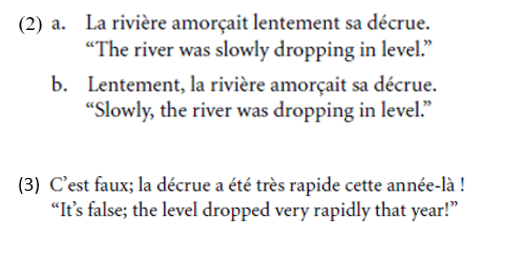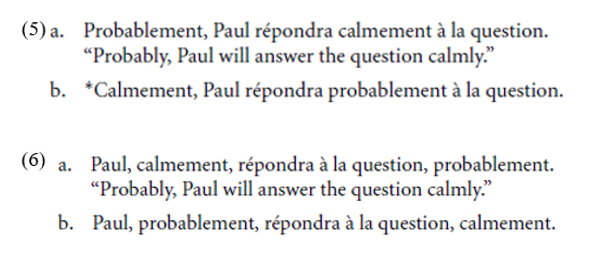

Grammar


Tenses


Present

Present Simple

Present Continuous

Present Perfect

Present Perfect Continuous


Past

Past Simple

Past Continuous

Past Perfect

Past Perfect Continuous


Future

Future Simple

Future Continuous

Future Perfect

Future Perfect Continuous


Parts Of Speech


Nouns

Countable and uncountable nouns

Verbal nouns

Singular and Plural nouns

Proper nouns

Nouns gender

Nouns definition

Concrete nouns

Abstract nouns

Common nouns

Collective nouns

Definition Of Nouns


Verbs

Stative and dynamic verbs

Finite and nonfinite verbs

To be verbs

Transitive and intransitive verbs

Auxiliary verbs

Modal verbs

Regular and irregular verbs

Action verbs


Adverbs

Relative adverbs

Interrogative adverbs

Adverbs of time

Adverbs of place

Adverbs of reason

Adverbs of quantity

Adverbs of manner

Adverbs of frequency

Adverbs of affirmation


Adjectives

Quantitative adjective

Proper adjective

Possessive adjective

Numeral adjective

Interrogative adjective

Distributive adjective

Descriptive adjective

Demonstrative adjective


Pronouns

Subject pronoun

Relative pronoun

Reflexive pronoun

Reciprocal pronoun

Possessive pronoun

Personal pronoun

Interrogative pronoun

Indefinite pronoun

Emphatic pronoun

Distributive pronoun

Demonstrative pronoun


Pre Position


Preposition by function

Time preposition

Reason preposition

Possession preposition

Place preposition

Phrases preposition

Origin preposition

Measure preposition

Direction preposition

Contrast preposition

Agent preposition


Preposition by construction

Simple preposition

Phrase preposition

Double preposition

Compound preposition


Conjunctions

Subordinating conjunction

Correlative conjunction

Coordinating conjunction

Conjunctive adverbs


Interjections

Express calling interjection


Grammar Rules

Passive and Active

Preference

Requests and offers

wishes

Be used to

Some and any

Could have done

Describing people

Giving advices

Possession

Comparative and superlative

Giving Reason

Making Suggestions

Apologizing

Forming questions

Since and for

Directions

Obligation

Adverbials

invitation

Articles

Imaginary condition

Zero conditional

First conditional

Second conditional

Third conditional

Reported speech


Linguistics

Phonetics

Phonology

Linguistics fields

Syntax

Morphology

Semantics

pragmatics

History

Writing

Grammar

Phonetics and Phonology

Semiotics


Reading Comprehension

Elementary

Intermediate

Advanced


Teaching Methods

Teaching Strategies

Assessment
Prosody, scope, and pragmatic status
المؤلف:
OLIVIER BONAMI AND DANIELE GODARD
المصدر:
Adjectives and Adverbs: Syntax, Semantics, and Discourse
الجزء والصفحة:
P300-C9
2025-04-30
764
Prosody, scope, and pragmatic status
The grammar fragment accounts for the semantics and pragmatics of evaluative adverbs occurring sentence-initially in assertions. What remains to be seen is how this fragment can be extended to the general case. In this section we deal with the issue of non-sentence-initial occurrences of evaluatives. In the next section we discuss the specific problems raised by evaluatives in questions.
At this point, we should stress an important distinction which is not usually made in the literature (Bonami et al. 2004): the distinction between a prosodic property, called here incidentality, and a semantico-pragmatic property, called here parentheticality. Expressions are incidentals when they are not prosodically integrated in the sentence: they are set apart by a number of prosodic cues that make them akin to independent intonational phrases (Fagyal 2002). This corresponds to what is referred to as “comma intonation” in much of the literature. On the other hand, parentheticals are expressions that do not contribute to the main semantic content, but provide an ancillary commitment. This may correspond to the terms “disjunct” (Greenbaum 1969; Espinal 1991) or “supplement” (Huddleston and Pullum 2002; Potts 2005). The problem is that these two properties are usually conflated. However, this is a mistake: the two properties are independent.
Consider (1), where incidentality is noted by commas, and prosodic integration by an absence of commas. It is clear that an evaluative adverb, which is a parenthetical, can be either incidental (1a) or integrated (1b).

As exemplified in (2), manner adverbs can also be used either with an incidental or an integrated prosody. Note that (3) is an appropriate response to both (2a) and (43b), which shows that manner adverbs contribute to the main content, irrespective of their prosody.

We conclude that the prosodic property of incidentality and the pragmatic property of parentheticality are independent. Actually this is to be expected, since the two properties have independent sources: being a commentary is a property of lexical items while being incidental is a property of their occurrences. Accordingly, evaluatives are parentheticals while manner adverbs are not, whether or not they are incidentals.
A final quick clarification is in order concerning the interaction of incidentality with interpretation. That incidentality is orthogonal to being a parenthetical does not mean that the prosodic property has no import on interpretation. In fact, it is crucially correlated with scope (Bonami et al. 2004): the correlation between scope and the syntactic property of order (alternatively, c-command in some other approaches)1 that characterizes integrated adverbs does not hold for incidentals. The findings are summarized in (4).

Let us take two adverbs whose relative scope is clear and well known: for obvious semantic reasons, modals have scope over manner adverbs, but not the other way around. Compare examples in (5), with one incidental and one integrated adverb, and (6), with two incidentals. Sentence (5b) is not acceptable, because the manner adverb is incidental and thus must have scope over the integrated modal adverb, which is not a licit scoping. Sentence (6a) shows that the incidental manner adverb may very well occur to the left of the modal adverb, as in (5b). In fact, in (6), the two orderings are acceptable, because both adverbs are incidental, and the relative scope of incidental adverbs is not constrained by order. Although we cannot dwell on this matter here, the import of incidentality on adverb scoping indicates that the prosodic behavior may be related to syntactic properties (mode of combination).

These observations mean that a satisfying fragment accounting for the scope of evaluative adverbs cannot be formulated before hard decisions about the syntax of incidentality, and the syntax–semantics interface for modifiers in general, have been made. Bonami and Godard (2007a) proposes a general syntactic treatment of incidental adverbs, relying on a distinction between phrase structure and word order domains (Reape 1994; Kathol 2000): according to this analysis, incidental adverbs are always adjoined to clauses in phrase structure, but can be linearized in different positions via domain union. Bonami and Godard (2007b) provides a syntax–semantics interface for evaluative adverbs which deals in detail with the scopal properties of integrated occurrences, by adopting Bouma et al.’s (2001) syntax for VP-internal modifiers andcoupling it with underspecified semantic representations based on Minimal Recursion Semantics (Copestake et al. 2006). Integrating this syntactic and combinatory semantic work with the present work on the lexical semantics and pragmatics of evaluative adverbs would yield a complete analysis of evaluatives in assertive contexts.
1 In a framework where adverbs are systematically the left daughter in a right-branching structure, the correlation can be reduced to a relation between scope and c-command rather than scope and order.
 الاكثر قراءة في Linguistics fields
الاكثر قراءة في Linguistics fields
 اخر الاخبار
اخر الاخبار
اخبار العتبة العباسية المقدسة

الآخبار الصحية















 "المهمة".. إصدار قصصي يوثّق القصص الفائزة في مسابقة فتوى الدفاع المقدسة للقصة القصيرة
"المهمة".. إصدار قصصي يوثّق القصص الفائزة في مسابقة فتوى الدفاع المقدسة للقصة القصيرة (نوافذ).. إصدار أدبي يوثق القصص الفائزة في مسابقة الإمام العسكري (عليه السلام)
(نوافذ).. إصدار أدبي يوثق القصص الفائزة في مسابقة الإمام العسكري (عليه السلام) قسم الشؤون الفكرية يصدر مجموعة قصصية بعنوان (قلوب بلا مأوى)
قسم الشؤون الفكرية يصدر مجموعة قصصية بعنوان (قلوب بلا مأوى)


















